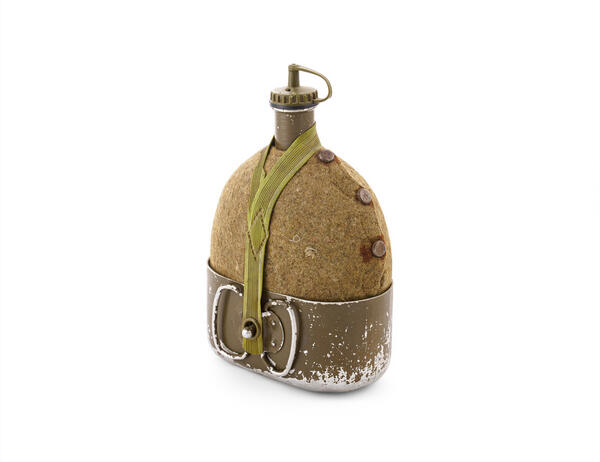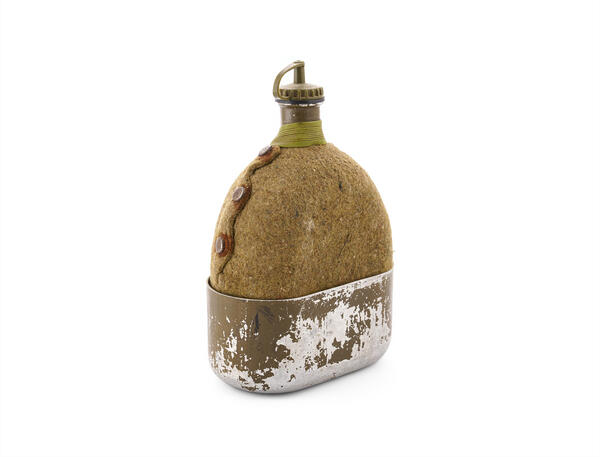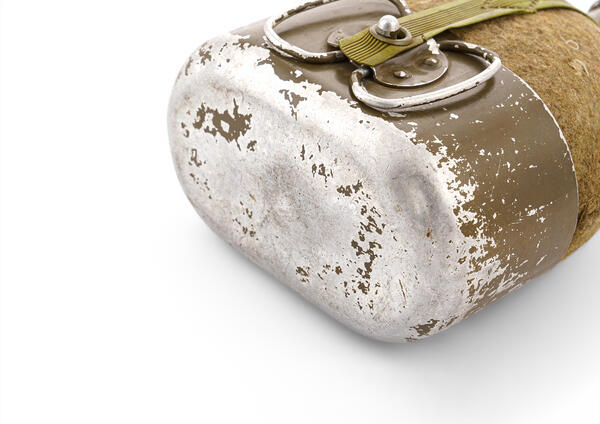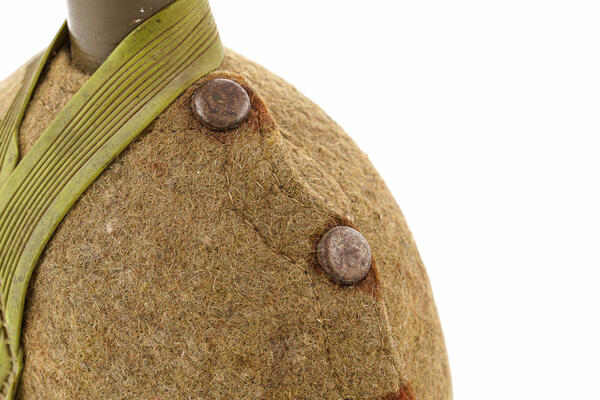The museum collection includes a portable aluminum flask in a removable cloth case. The flask belonged to the writer Arkady Petrovich Gaidar: he took it on campaigns during the Civil War.
The item was given to Timur Arkadyevich Gaidar, the writer’s son, by Ruvim Isaevich Fraerman, a friend of Arkady Petrovich. In 1991, Timur Gaidar donated the flask to the funds of the Literary and Memorial Museum named after Arkady Gaidar.
On January 23, 1919, the staff train of the commander of the RSFSR railway’s military guard departed from Arzamas to Moscow. Arkady Golikov, the future Gaidar, left Arzamas with the commander. By the spring of 1919, he was promoted from an ordinary adjutant to the head of the communications team of the headquarters.
On March 20, 1919, Arkady joined the infantry courses, first in Moscow and then in Kiev. Soon he went to Ukraine. He was sent to the western front, where he fought against the White Poles. In one of the battles, he was wounded in the leg by shrapnel and evacuated to a hospital. After treatment, he returned to Arzamas.
At the end of March, Arkady Petrovich was assigned to the 3rd Brigade of the 14th Infantry Division. Later, he was sent to the Caucasus, where he was appointed commander of the 4th company of the 303rd Regiment. In February 1921, Arkady Golikov took command of the 23rd Reserve Voronezh Regiment.
He then arrived at the disposal of the Oryol Military District, where he was sent to the Tambov province to suppress the uprising of Socialist revolutionary Alexander Stepanovich Antonov. Arkady Golikov was appointed commander of the 58th Nizhny Novgorod Rifle Regiment. In August 1921, the gangs in the Morshansky district were defeated.
Arkady then went to Moscow, where he was sent to the Ural Military District to serve in the special forces of the Bashkir Republic. Soon, he was transferred to Beloretsk.
Afterward, Arkady Golikov was sent to Siberia, to the Yenisei province, where he took up the position of commander of the Sixth Combined Detachment of Siberia. Soon, he headed the second combat area, which included the south of the Krasnoyarsk Territory.
In August 1922, Arkady Golikov was recalled to Krasnoyarsk. He was preparing to enter the General Staff Academy, but old wounds and a concussion began to trouble him. He underwent treatment and moved from Siberia to Moscow.
In August 1923, Arkady Golikov received a six-month
leave. Due to health reasons, he was not admitted to the General Staff Academy.
At that point, he began writing and created his first novella, “In the Days of
Defeats and Victories.”







